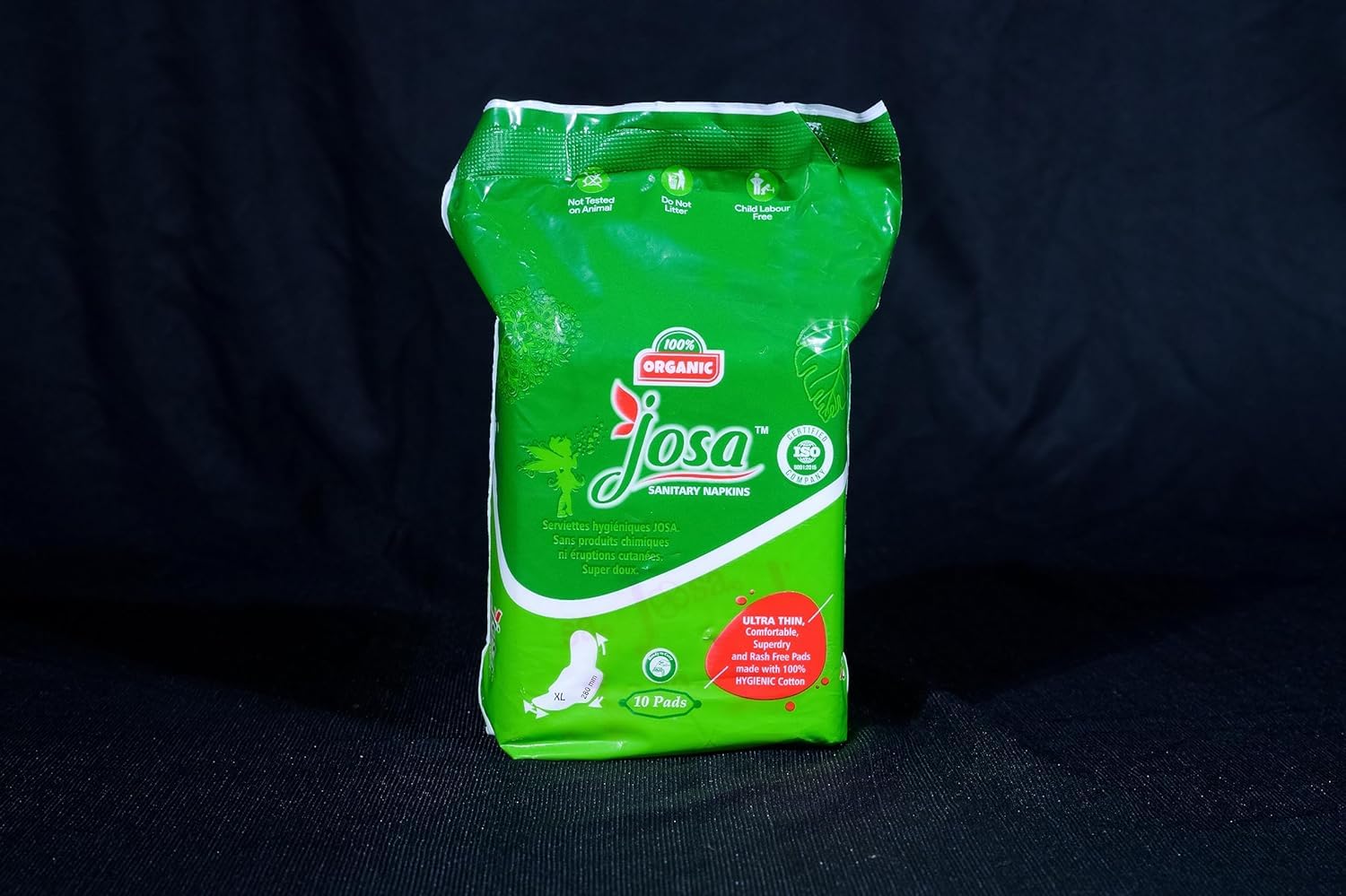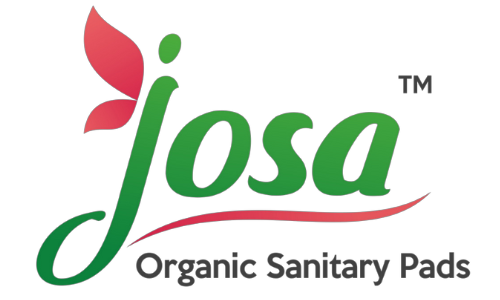
Are you confused about choosing organic pads or pantyliners for your feminine hygiene needs? Well, you're not alone. A lot of women are struggling with this dilemma. Fortunately, we are here to assist you in making an informed selection.
The functions of pads and pantyliners differ, and it's important to recognize these distinctions. Pads are larger and provide more coverage, making them suitable for heavy menstrual flows. Light Panty liners, on the other hand, are thinner and more unobtrusive, making them ideal for daily freshness or light spotting.
When picking between pads and panty liners, consider your specific requirements. Pads may be the best option if you have a lot of flow or need protection overnight. However, if you need everyday protection between periods or on light flow days, pantyliners might provide the comfort and security you require.
Your lifestyle and personal preferences will ultimately determine whether you use pads or pantyliners. You can choose the product that best fits your needs and provides comfort and peace of mind throughout your menstrual cycle by being aware of the distinctions between them.
Explaining the difference between pads and panty liners
Pads and panty liners are both important feminine hygiene products, yet they fulfill different functions and have distinct properties. Understanding the fundamental distinctions between the two might help you make an informed decision about which to use during your menstrual cycle.
Pads, often called sanitary napkins, are larger and more absorbent than panty liners. They are intended to be worn inside your underwear and offer complete protection against higher menstrual flow. Pads usually contain a quilted or padded surface, a moisture-wicking layer, and a leak-proof backing to provide optimal protection and comfort.
Pantyliners, on the other hand, are thinner, more modest, and provide less protection. They are usually used for daily freshness, light spotting, or to add extra protection during your period's lighter days. Panty liners are designed to be used regularly, even when you are not on your period, to help you feel refreshed and confident.
When to use organic pads

Pads are the go-to solution for women who have a strong menstrual flow or need more protection during their periods. They are especially handy during the busiest days of your cycle, when the flow can be erratic and heavy.
Pads are especially advised for overnight usage since they provide higher absorbency pad and leak protection, resulting in a comfortable and worry-free sleep. The greater size and thicker shape of the pads ensure a snug fit and avoid any unwanted leaks or stains on your bedsheets.
Moreover, pads are the ideal alternative for women who participate in vigorous activities or exercise during their periods. Pads with enhanced absorbency and covering can help prevent accidents or awkward circumstances caused by a heavier flow.
When to use panty liners

Panty liners are great for everyday usage, especially on milder days of your menstrual cycle or when you don't have your period. They can make you feel more refreshed and confident by adding a subtle layer of protection against light spots, discharge, and ordinary moisture.
Pantyliners are also ideal for women who have irregular or unpredictable periods. They can be used as a preventive measure to make you feel prepared and protected, especially on days with unusually high light flow.
Furthermore, panty liners can help women who are going through hormonal changes, such as perimenopause or postpartum, when their flow may be lighter and more erratic. Panty liners are a practical solution for daily use due to their thin and unobtrusive construction.
Absorbency levels of pads and panty liners
The absorbency of pads and panty liners is a crucial factor to consider when selecting the best feminine hygiene product for your requirements.
Pads are intended to provide a higher level of absorbency, usually ranging from "light" to "super" or "overnight" absorbency. Higher absorbency levels are required to accommodate heavier menstrual flows while also providing reliable leakage protection. Pads with a "super" or "overnight" absorbency level are very beneficial for women who have a large flow or require additional protection while sleeping.
In contrast, panty liners have a lower absorbency rating, often ranging from "light" to "moderate." They are designed to handle lighter flows like spotting, discharge, or ordinary dampness. Panty liners are not appropriate for managing excessive menstrual bleeding, as their absorbency capacity is not sufficient to prevent leakage or staining.
Comfort and convenience factors
Both pads and panty liners are created with comfort and convenience in mind, yet they provide varying degrees of comfort and simplicity of use.
Pads are typically larger and thicker, providing a sense of security and protection for women with higher flow rates. However, some women may find the extra weight and thickness of pads uncomfortable, especially during physical activity or when wearing tight-fitting clothing.
Pantyliners, on the other hand, are thinner and more unobtrusive, making them a more comfortable choice for daily usage. Their thin, flexible shape provides a more natural and inconspicuous feel, which can be especially advantageous for women who are sensitive to the sensation of wearing feminine hygiene products.
Cost comparison between pads and panty liners
The price of pads and panty liners varies depending on the brand, size, and features, although panty liners are often less expensive than pads.
Pads and panty liners are priced differently based on brand, size, and features, although panty liners are often less expensive than pads.
Pads are often more expensive due to their higher absorbency and larger size. The price might range from a few rupees per pack for inexpensive, generic brands to several rupees per pack for luxury or specialized items.
Panty liners, on the other hand, are typically less expensive, with packs costing between a few cents and a rupee or two. This makes panty liners a more affordable choice for ladies who require everyday protection or have lighter flows.
Environmental impact of pads and panty liners
The price of pads and panty liners varies depending on the brand, size, and features, although panty liners are often less expensive than pads.
Both pads and panty liners have an environmental impact, although the extent of the damage varies depending on the materials used and disposal procedures.
Traditional pads and panty liners are often constructed of plastic, cotton, and other synthetic materials. These materials are nonbiodegradable and may add to the growing problem of plastic waste. When disposed of in landfills or oceans, these items can take hundreds of years to decompose, creating a serious environmental concern.
The price of pads and panty liners varies depending on the brand, size, and features, although panty liners are often less expensive than pads.
In recent years, there has been an increasing awareness of the environmental impact of feminine hygiene products, prompting the development of more environmentally friendly alternatives. Reusable menstrual pads, cups, organic or biodegradable pads, and panty liners are becoming more widely accessible. These solutions can help reduce waste and lessen the environmental impact of feminine hygiene products.
Choosing the right menstrual hygiene product for your needs
The price of pads and panty liners varies depending on the brand, size, and features, although panty liners are often less expensive than pads.
When it comes to selecting pads or panty liners, there is no one-size-fits-all solution. The ultimate selection is based on your personal needs, tastes, and the specifics of your menstrual cycle.
If you have a lot of menstrual flow or need protection overnight, pads with a higher absorbency rating may be a better option. They provide more extensive coverage and leak prevention, ensuring a worry-free experience on high-flow days.
On the other hand, if you need everyday protection, light spotting, or a discreet solution, panty liners may be a better and more comfortable option. Their thin and flexible construction makes them comfortable to wear and less noticeable beneath your apparel.
Conclusion and final thoughts
Navigating the world of feminine hygiene products can be difficult, but understanding the fundamental distinctions between Organic pads and panty liners will allow you to make an informed purchase that best meets your needs.
Pads are the preferred method for heavier menstrual flow and overnight protection, while panty liners are perfect for daily freshness, mild spotting, and more unobtrusive coverage. When deciding on the best product for you, keep absorbency, comfort, convenience, cost, and environmental impact in mind.
Finally, the decision between pads and panty liners is a personal one, and it may take some trial and error to find the option that best suits your specific needs. Remember, there is no one-size-fits-all method, and it is crucial to listen to your body and choose the product that makes you feel confident, comfortable, and secure throughout your menstrual cycle.

